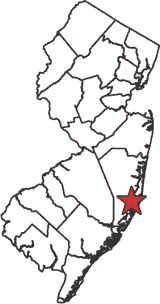Restoration of Historic Barnegat Bay Headwaters
In Winter 2001, DU began work on a project to restore a remnant of Atlantic white cedar at a site in Brick Township in Ocean County, New Jersey. The restoration will be accomplished through a partnership between DU, Ocean County, and Brick Township. DU will design and implement the project using heavy equipment and a grant from the New Jersey Freshwater Wetlands Mitigation Council. The Council was created by the Freshwater Wetlands Protection Act to manage monies donated to the Department of Environmental Protection as mitigation for a wetlands permit or violation and where other, preferred forms of mitigation are not feasible.Historically, many of the streams and rivers of southern New Jersey were lined with swamplands dominated by Atlantic white cedar. The extensive cedar swamps that once existed on the Inner Coastal Plain have largely disappeared, and those on the Outer Coastal Plain have been much reduced through conversion to agriculture and lumbering. Today, most New Jersey cedar swamps are found in the Pine Barrens. Cedar swamps are important habitat for an array of endangered species and support nearly twice the density of nesting birds than more common maple-gum wetland.
The Brick Township project lies within the headwaters of Barnegat Bay Estuary, recognized as an estuary of national significance by the National Estuary Program. It is both a vital component of New Jersey's tourist industry, and an important natural resource that supports populations of commercially and recreationally significant fish and rare and endangered species.
The quality of water in New Jersey's coastal bays depends heavily on the integrity of habitats located in the headwaters of the tributaries. Headwaters are complexes of forested wetlands and wet meadows from which arise the streams and rivers that feed the Bay. While they lie many miles from the mouth of a waterway, they have a dramatic effect on the productivity of downstream wetlands. However, when the headwaters remain protected, buffered by land in a natural state, valuable wetland habitats at a tributary's mouth - tidal flats and marshes - remain healthy. Improved water quality promotes the recovery of submerged aquatic vegetation that are essential to support fish and wildlife populations, thus improving the overall quality of life throughout the coastal ecosystem.
The goal of DU's habitat programs in the Northeast is to protect, enhance, and restore waterfowl and wetland habitats and water quality through regionally based, biologically driven, landscape oriented conservation that integrates the habitat needs of all wetland-dependant wildlife. Projects like the Atlantic white cedar restoration in Brick Township help to build new partnerships that help us meet that goal. Our success will be measured in increased habitat, improved water quality, increased public awareness of wetland and waterfowl conservation, and more exposure and recognition of DU's conservation program.

Ducks Unlimited uses cookies to enhance your browsing experience, optimize site functionality, analyze traffic, and deliver personalized advertising through third parties. By continuing to use this site, you agree to our use of cookies. View Privacy Policy